UArizona Nursing Leads Students on COVID-19 Relief Project in Gallup, New Mexico
Gallup Banner Image.jpg

In February, 2021, University of Arizona College of Nursing professors Timian Godfrey, DNP, APRN, FNP-BC and Lisa Kiser, DNP, CNM, WHNP took a team of six students to Gallup, New Mexico for a clinical immersion experience at a critical access hospital operated by the Indian Health Service. Titled the Gallup Indian Medical Center COVID-19 Relief Project, the unique service-learning immersion experience was in direct response to a request for assistance from the Gallup Indian Medical Center (GIMC).
University of New Mexico Director of Community Environmental Health Program, Johnnye Lewis started the ball rolling when she wrote that GIMC was in desperate need of nurses. “Infection rate on Navajo has been steadily increasing despite reductions in the state of NM rate recently, and as always, they are woefully understaffed,” she wrote.
Drs. Godfrey and Kiser answered the call, quickly developing and piloting the service-learning immersion program.
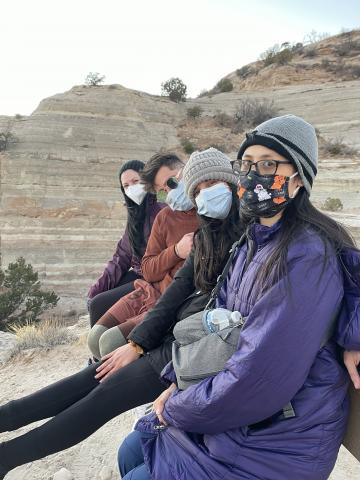
“Throughout the COVID-19 pandemic, I’ve felt helpless as I witnessed devastation occur throughout our nation and disproportionately affect my people on the Navajo Nation,” Dr. Godfrey said. “When I received notice that GIMC needed help with COVID-19 relief efforts and was asking for nurses specifically, every part of who I am as a nurse and a Navajo woman wanted to help the frontline workers who had been working non-stop for almost a year. Since I didn’t have experience in organizing an immersion experience like this, I reached out immediately to some incredible faculty members to see how, and if, this could be operationalized. From there, the effort and collaboration from all levels within UA CON, Central Arizona AHEC, UAHS, and GIMC was simply amazing.”
Approval from the College of Nursing and UArizona Health Sciences was received on the February 5 and by the 8th, faculty and students were on their way to New Mexico to begin their one-week project.
Learning objectives for the project were geared around encouraging leadership and engagement as the students supported COVID-19 vaccination efforts at GIMC. Students practiced gathering a comprehensive or focused history, performed physical examinations, and developed a problem list for acute and chronic stable health conditions related to COVID-19.
Additionally, they developed a comprehensive plan for health maintenance through immersive and tailored understanding of the health issues and concerns during the COVID 19 pandemic for indigenous communities in New Mexico and the southwest. Ultimately, students had the opportunity to present patient cases to preceptors, faculty or peers; and provided peer review to fellow students on history-taking, reporting of physical exam findings, and the resulting clinical decision-making process during case reviews.
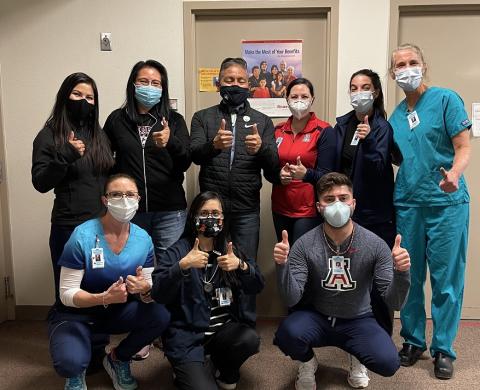
The service learning project is unique because, as Dr. Godfrey points out, it provides a chance to learn and grow both to the service providers and those they are serving. “If anything, I’ve learned more from the community partners on service learning immersions rather than me serving them,” Dr. Godfrey says. “True service learning is a synergistic process that is symbiotic and enriches all parties involved. It unites people in a common purpose and elevates the learning experience from awareness to knowledge. Being able to work with GIMC in their relief efforts was a transformational experience for me. The resilience, strength, and compassion of the people at GIMC and the community members have made an indelible mark on how I will move forward as a nurse, educator, and person.”
The Clinical Immersion Experience was a success by many measures. GIMC received much-needed people power in managing response endeavors and students developed essential cultural competencies that led them to incorporate theories and methods that affect practice in underserved populations. Both GIMC and Drs. Godfrey and Kiser are excited to continue the collaboration and funding is in place for more immersions at GIMC.
“These students developed a strong cultural understanding at the end of the experience,” says DNP Program Director Allen Prettyman, PhD, FNP-BC, FAANP, FNAP. “They all demonstrated that they will be future Advanced Practice Registered Nurse (APRN) leaders. In addition the trip was supported by the UArizona Area Health Education Centers (AHEC) and Central Arizona AHEC (CAAHEC) using a collaborative model that supported educational excellence.”
We recently caught up with several of the students who participated in the project to hear more about their experiences.
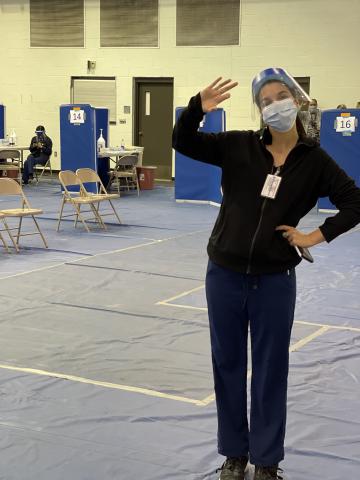
Anne Fong:
What drew you to participate in this service-learning project?
I wanted to be a part of a small yet critical group of DNP students who could provide support to an overwhelmed care system. I wanted to learn more about the Navajo culture, the Indian Health Service, and the tribal community.
Tell us about the experience.
The experience was eye-opening. I enjoyed every minute of it. I enjoyed interacting with my professors and peers. I enjoyed learning how to say ‘hello’ and ‘thank you’ in Navajo, and I enjoyed providing services to the people of the community. It is hard to pick a favorite part, but if I had to, I would pick listening to the patient’s stories and learning about their struggles and their triumphs. The most challenging part was the weather because it was cold the entire time.
What was your biggest takeaway from the experience?
Although Gallup Medical Center is an older, smaller, hospital with limited staff and resources, their cohesiveness and interprofessional collaboration exceed those of any large hospital with expensive equipment and thousands of staff. The way their system is set up is fluid and runs so smoothly that it can handle any trauma that comes their way.
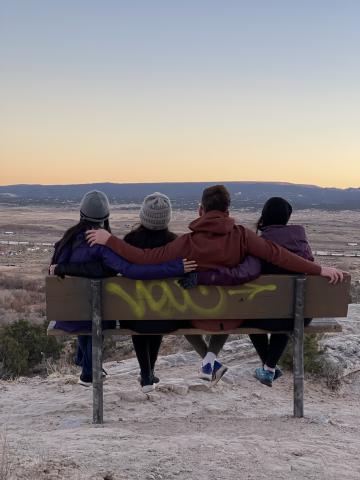
Lindsay DeWolfe:
What drew you to participate in this service-learning project?
There is no better way to learn about another culture than being immersed in it. It is gratifying for me to learn and work with communities that are so different than my own. Experiences like this make it easier to connect with the myriad of patients I will meet in my future practice. I will understand them better and provide culturally competent care, which is important to me.
What was your biggest takeaway from the experience?
Meeting many people of the Navajo Nation was the best part of the experience. Each was different in their own way, and each had their own unique life experience that they often shared with me. Many had sad stories, such as losing many family members to the pandemic. I supported them as best I could by empathizing with them and encouraging them that they were making a difference for their people by them getting vaccinated. I also was able to help uplift them with a simple expression of “Yá’át’ééh", which means "hello" in Navajo. This led to some elders teaching me how to say "hello grandmother, grandfather, and granddaughter". The Navajo language is starting to get lost in the modernization of the younger generations, and I hope that the simple greeting helped encourage the continuation of the language somehow.
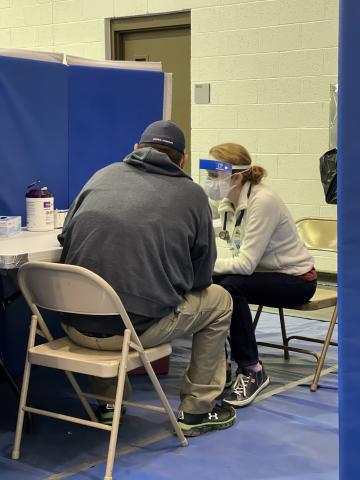
Stephanie Hallenbeck:
What drew you to participate in this service-learning project?
The project at GIMC initially grabbed my attention because I was very interested in working with the Navajo population. I had spent many night shifts with a colleague from Navajo Nation who told me a lot about her family -- her grandfather was a Navajo code talker. I've been fortunate enough to have many different international experiences, healthcare related and otherwise, but had very little exposure to any Native American cultures, so I felt that this experience would add an important dimension to my cultural knowledge and understanding.
What was your favorite part of this experience?
I sincerely enjoyed working with and getting to know the Navajo people - I would jump at the opportunity to return. My favorite part was talking with patients and learning about their lives. I also enjoyed the nightly discussions led by the faculty members on the trip - these conversations highlighted for me the unique approach that nurse practitioners bring to the healthcare profession and it made me feel proud to be a part of it.
What was your biggest takeaway from the experience?
This experience was an incredibly positive one even at a time of so much pain and suffering. I will never forget the tears of joy and gratitude that were shed by some as they received their vaccination. It is very impressive what Gallup Indian Medical Center is able to accomplish even with limited funding. Every department I interacted with was incredibly well-run - organized, efficient - and all of the staff were very friendly and welcoming.

